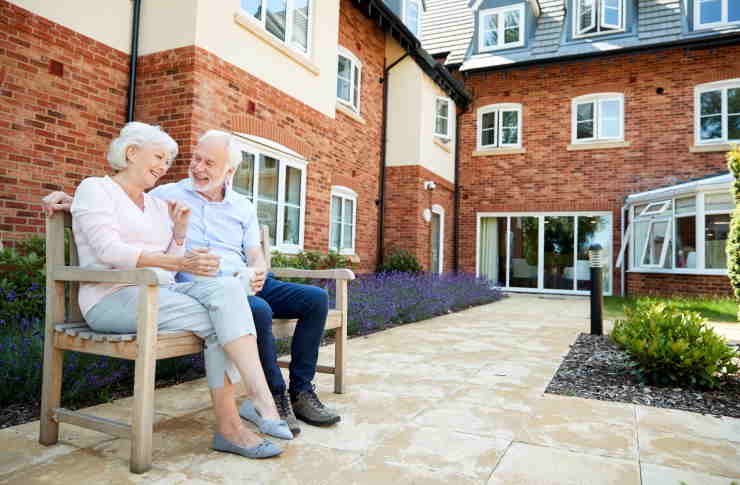Senior Apartments: Complete Guide to Independent Living
Explore senior apartments as a practical housing option for older adults seeking independence, safety, and community. This in-depth guide covers accessibility features, social and wellness amenities, cost ranges, and how to choose the right community. Learn what to expect from senior housing, compare options, and find the best fit for your lifestyle and budget.

Senior Apartments: Complete Guide to Independent Living
What features do senior apartments typically offer?
Senior apartment communities are built to make daily life easier and safer for older adults. Common design elements include wider doorways, step-free entries, lever-style handles, and grab bars in bathrooms to improve accessibility and reduce fall risk. Safety systems often include emergency call buttons or pull cords, well-lit corridors and parking areas, controlled-access entrances, and routine safety checks.
Many communities provide maintenance-free living by handling landscaping, repairs, and common-area upkeep so residents can avoid the chores of homeownership. Social and recreational spaces are another hallmark: lounges, hobby rooms, fitness centers, and gardens create opportunities to meet neighbors and stay active. On-site or scheduled transportation services are increasingly common, offering shuttles to shopping centers, medical appointments, and community events.
These features are designed to protect independence while addressing mobility, safety, and social needs specific to older adults.
How do senior apartments differ from other elderly housing options?
Senior apartments are primarily aimed at older adults who want to live independently without daily personal care. Unlike assisted living or nursing facilities, they usually do not provide regular medical or personal care services. Age limits are typical; many buildings accept residents 55 or 62 and older, depending on local regulations and the community’s target demographic.
Compared with general rental apartments, senior housing tends to include amenities and programming tailored to older residents, such as social clubs, wellness classes, and modified unit layouts. In contrast to continuing care retirement communities (CCRCs), which bundle progressive levels of care on one campus, senior apartments generally cost less and focus on independent living rather than long-term healthcare transitions.
The community emphasis is another distinction: these complexes foster social interaction and mutual support among peers, which is less commonly prioritized in standard apartment settings.
Benefits of living in a senior apartment
Choosing a senior apartment can bring several advantages:
- Increased social engagement: Shared activities and common spaces help reduce isolation and encourage friendships.
- Enhanced safety: Buildings often include age-friendly safety features and emergency response systems.
- Reduced maintenance responsibilities: Property management handles routine repairs, landscaping, and building maintenance.
- Accessible design: Units and common areas are usually configured for easier mobility and reduced barriers.
- Organized programming: Many communities schedule classes, outings, and events that promote physical and mental well-being.
- Potential savings: Consolidating services and amenities can be more economical than maintaining a private home or paying for higher levels of care prematurely.
These benefits contribute to a more manageable, social, and secure daily life for many older adults and provide peace of mind for families.
How to choose the right senior apartment
Selecting the best community takes research and on-site visits. Consider these factors:
- Location: How close is the community to family, nearby friends, grocery stores, pharmacies, and medical providers? Easy access to transportation and familiar destinations matters.
- Budget: Ask for a comprehensive breakdown of rent, utilities, deposits, and any extra fees for meals, parking, or transportation. Determine whether income-restricted options are available if affordability is a concern.
- Amenities and services: Prioritize services that matter most, such as on-site fitness classes, social programming, housekeeping, or shuttle service.
- Community culture: Spend time in the common areas, attend an event if possible, and talk with residents to gauge the atmosphere, activity levels, and demographic mix.
- Policies: Review rules about pets, visitors, smoking, and subletting. Make sure age restrictions and lease terms align with your needs.
- Future needs: Think ahead about potential changes in mobility or health. Ask whether on-site or nearby higher-care options exist if needs evolve.
A careful tour, reference checks, and clear financial comparisons will help you find a community that fits both current preferences and likely future needs.
What are the typical costs associated with senior apartments?
Costs vary by region, building type, unit size, and included services. Below is a general overview to help with budgeting.
| Type of Senior Apartment | Average Monthly Cost Range |
|---|---|
| Standard Senior Apartment | $1,000 - $3,000 |
| Luxury Senior Apartment | $3,000 - $6,000+ |
| Income-Restricted Senior Housing | $400 - $1,000 |
Prices, rates, or cost estimates are based on available data and may change. Independent verification is recommended before making financial decisions.
These ranges are influenced by geographic location, the size and condition of the unit, and whether utilities, meals, transportation, or activities are bundled into the monthly fee. Some communities charge additional fees for premium services, short-term respite stays, or specialized transportation.
Before signing a lease, request a written summary of all costs and ask about typical utility usage, deposit requirements, and any potential rent increases. Compare multiple communities in your desired area to ensure you understand the value and services you receive for the price.
Final considerations
Senior apartments can be an excellent option for older adults who want to preserve independence while gaining the convenience, security, and social opportunities of a community designed with their needs in mind. By prioritizing location, budget, lifestyle preferences, and future care possibilities, seniors and their families can make an informed decision that supports quality of life now and in the years ahead.






